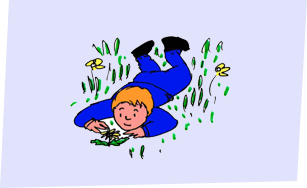Design and Technology

Most of the children start at our school with some experience of joining materials creatively to make things, using junk modelling or reclaimed materials.
We aim to instil in our children, an awareness of Design and Technology as part of our everyday lives and to provide opportunities for Design and Technology tasks. We want our children to have the opportunities to explore, design, make, model, test and reflect, as individuals and collaboratively. We aim for our children to become resourceful, enterprising and confident problem solvers.
Our Design and Technology scheme of work has comprehensive cover of the National Curriculum requirements, showing clear progression of knowledge and skills from Reception to Year Two. This year we have begun to use Kapow Primary’s scheme of work for teaching our Design and Technology curriculum.
https://www.kapowprimary.com/subjects/design-technology/
The Kapow scheme of work gives children the opportunity to engage in real life, relevant contexts and processes, immersing them in learning which is memorable, purposeful and practical. It helps the children to think about products in the world around them and question how and why things work the way they do, exploring the designed world in which we live and work.
language development
In order to reduce cognitive overload and develop our children’s working memories, a precise bank of key design and technology vocabulary will be identified in each lesson. This will be planned, taught, used in context and built upon in subsequent lessons through a unit and relevant future topics.
Throughout lessons, we aim for the children to practise using relevant vocabulary in the context of their exploring, planning, making, describing processes and evaluating.
learning behaviours
physical activity
cultural capital
Our design and technology curriculum is linked to each half term’s topic in each year group. Units are mostly linked to subjects such as Science, Humanities and Literacy. We actively encourage our children to apply their knowledge and experience gained from other areas of the curriculum. We also encourage the children to draw on their own cultural experiences. We recognise that children are intrinsically interested in and excited by the idea of making functional products, and we aim to foster a life-long interest in Design and Technology.
We aim to ensure that starting points for units involve research of a broad range of interesting and inspiring products from real life. We also aim to ensure that our children become increasingly aware of making a product for a specific purpose and user, considering the needs of others. Children to begin to develop their knowledge of nutrition and the importance of eating healthily. They will take part in food preparation and cooking activities. They will explore where food comes from.creative curriculum design and progression
If you were to walk into a Design and Technology lesson at Garden Suburb Infant School, you would see:
- All children engaged and enthusiastic to gain knowledge about designing and making products.
- Children handling a range of tools and materials confidently and safety, including in the continuous provision in the early years.
- Children who can work independently, and are also keen to share and work co-operatively. They take turns, are keen to enquire, explore and ask questions.
- Children using subject specific vocabulary, appropriate to their age and stage of development, with understanding and confidence, to talk about different aspects of their work.
- A focus on aspects of the designing, making and evaluating cycle.
- Children working collaboratively to join, make and solve problems in lessons.
- Teachers demonstrating secure subject knowledge, teaching lessons which are explicitly adapted to be both ambitious and to meet the needs of pupils with Special Educational Needs.
- Teachers and support staff presenting information and examples of existing products clearly, encouraging appropriate discussion to learn key concepts.
- Teachers and support staff helping children to use and apply their knowledge and skills, in a practical context.
- A powerful learning environment, including displays which reflect their learning.

